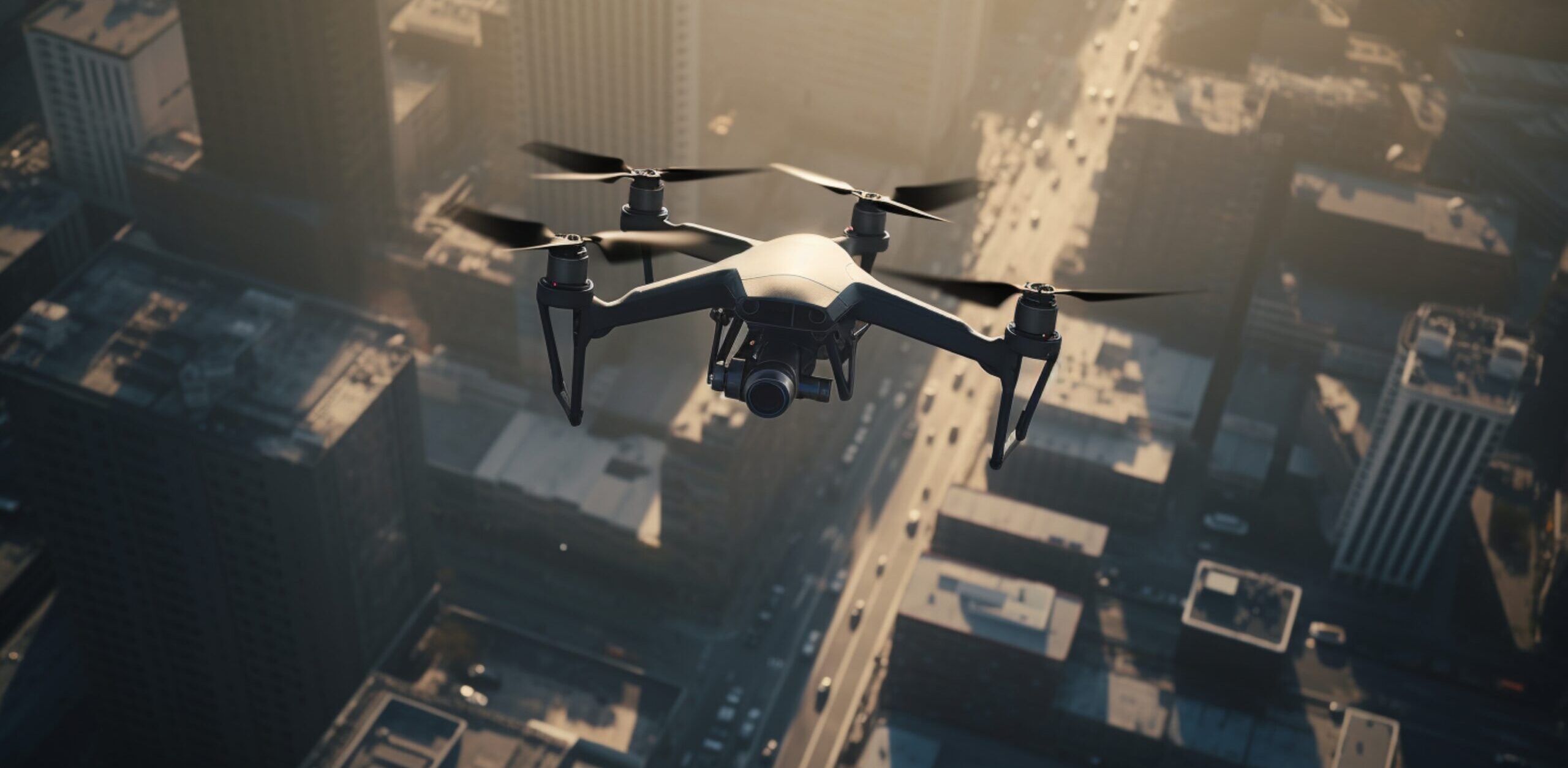Aerospace and defense technologies company AIRO Group Holding’s IPO debuted in June on the strength of its record as a drone developer and manufacturer. CEO Joe Burns and Executive Chairman Chirinjeev Kathuria discuss how drones are transforming industries from defense to commercial applications: all under the watchful eyes of Wall Street.
Global Finance: Have drones fundamentally changed modern conflict?
Joe Burns: The Russia-Ukraine war has been known as the drone war, and for good reason. The reality is that drones are finding their way into conflicts and can be a very useful tool without taking the same risk that you would take with manned assets. It’s been a sea change in how conflicts are managed, and drones are now an integral part of that.
Chirinjeev Kathuria: The $25 million tank taken out by a $100,000 drone is going to change battlefield strategy entirely. It’s hard to imagine you can take a truck, put drones in a box, and launch them. It’s fascinating, but it also can be very devastating. On a single night, there were 191 drones launched into Ukraine that can destroy different cities. It’s a whole different way of warfare, and it’s going to change NATO, US, and European military strategies and budgets. I don’t think anyone ever talked about drones dominating like this.

GF: How do you see defense spending evolving over the next decade?
Burns: I am confident that defense spending is going to increase dramatically. We’re already seeing increases in the US and in NATO countries. The move from 1.5% of GDP to 2% is already underway, and the next move from 2% to 5% by 2035 is also very real. Because of the war in Ukraine, countries are confident that preparing for conflict in advance, rather than getting caught after something’s already happened, is a growingly important factor in today’s geopolitical landscape.
Kathuria: Europe and Canada have already increased their spending. Denmark had almost a 100% increase in defense spending. The truth is, the geopolitical environment has changed in ways we hadn’t seen in decades, so everyone is earnest about this matter.
GF: From a theoretical perspective, how stable are AIRO’s sales projections, given the innate uncertainty of conflict?
Burns: There’s always going to be a need for products such as ours for surveillance, even in the absence of armed conflicts. Moreover, as history has shown us repeatedly, systems that are developed for the military rapidly flow into the civilian space. And I see that happening in the drone environment as well.
GF: How has the market treated defense and drone companies lately?
Kathuria: On Wall Street, currently, anything drone-related gets attention. It’s almost like the AI boom. Our IPO launched on a Wednesday and was priced within 48 hours. Our follow-on offering, which we completed in September, was priced within one day and was upsized by a maximum of 20% with the greenshoe exercise [follow-on sale of more shares than originally planned]. Financial investors and corporate partners are really looking at the companies in the space, trying to figure out the eventual winners of this boom.
Burns: We just read the other day that there are something like 300 drone manufacturers in Ukraine. That’s a massive number, right? They weren’t there prior to this conflict. They might be moving around a lot, might be in people’s garages, might be big factories. However, this has really changed the competitive landscape quite a bit.
GF: Do you expect the industry to consolidate?
Kathuria: There are probably 1,000 different drone companies and manufacturers, but as you’ve seen in every industry—even with AI, from OpenAI and Elon Musk’s SpaceX—consolidation’s going to happen very quickly. You’re going to see rapid consolidation, and investors will focus on companies that have been proven in the space.
GF: What non-defense applications do you see for drone technology?
Burns: When we started, we went to the very first trade show for drones, and it was pretty much all commercial civilian applications, very heavily focused on agriculture. What we’re seeing now is a secondary resurgence. Companies that maybe didn’t want to plunge into drones before are now looking at uses in agriculture, forestry, resource monitoring, and counting vehicles. It’s really an unlimited list.

Executive Chairman at AIRO Group
GF: Do you expect commercial growth to outpace military applications in the drone industry?
Burns: As history has shown us repeatedly, systems developed for the military rapidly flow into the civilian space. The answer for me is yes. I see the commercial side starting to adopt drones at a much higher rate than we even anticipated.
Kathuria: I agree the commercial side will grow faster. Providers of military drones are better adapted because we’ve developed our technology in the military environment, and the regulations and requirements on the commercial side aren’t as strenuous. We’re well-positioned for that growth.
GF: How is AI contributing to drone development and capabilities?
Burns: Once we launch our drones, they are completely autonomous. They go out and fly their patterns, look for the intelligence they’re searching for on their own, and come back and land on their own. That’s a huge advantage.
Computational fluid dynamics software that used to take extensive time to run can now be done with AI at a much greater rate. And when it comes to jamming and spoofing, AI is crucial in how we counteract interference systems.
GF: How have tariffs and supply chain disruptions affected your operations?
Burns: The way our companies are distributed, we’ve had very little tariff impact. The US products are sourcing mostly US components for all of our product lines, not just in the drone world, but certainly in avionics. If there are some regional tariffs in place, they’ve been in place for a long time; we’ve seen no increases. So very little impact on the way we’ve structured our company.
GF: How is regulation evolving as drones become more prevalent?
Burns: All the regulatory agencies involved in aviation recognize that you just can’t let an industry run free in the same airspace being shared with manned aviation. As time goes on, we’ll see more integration into air traffic control, because it’s needed. The ability to track and identify individual drones, whether they’re friend or foe, is going to be an essential part of air traffic systems around the world.
GF: Beyond drones, what other market opportunities do you see?
Burns: One big area that I know everybody has been impacted by is the pilot shortage, and there’s going to continue to be one. Everybody retires at age 65 with the airlines in the US. Time marches on, pilots must retire, and they need to be replaced. We are very excited about the prospects of commercial pilot training schools and have an active letter of intent with a pilot training company to bring in expansion opportunities for us.




